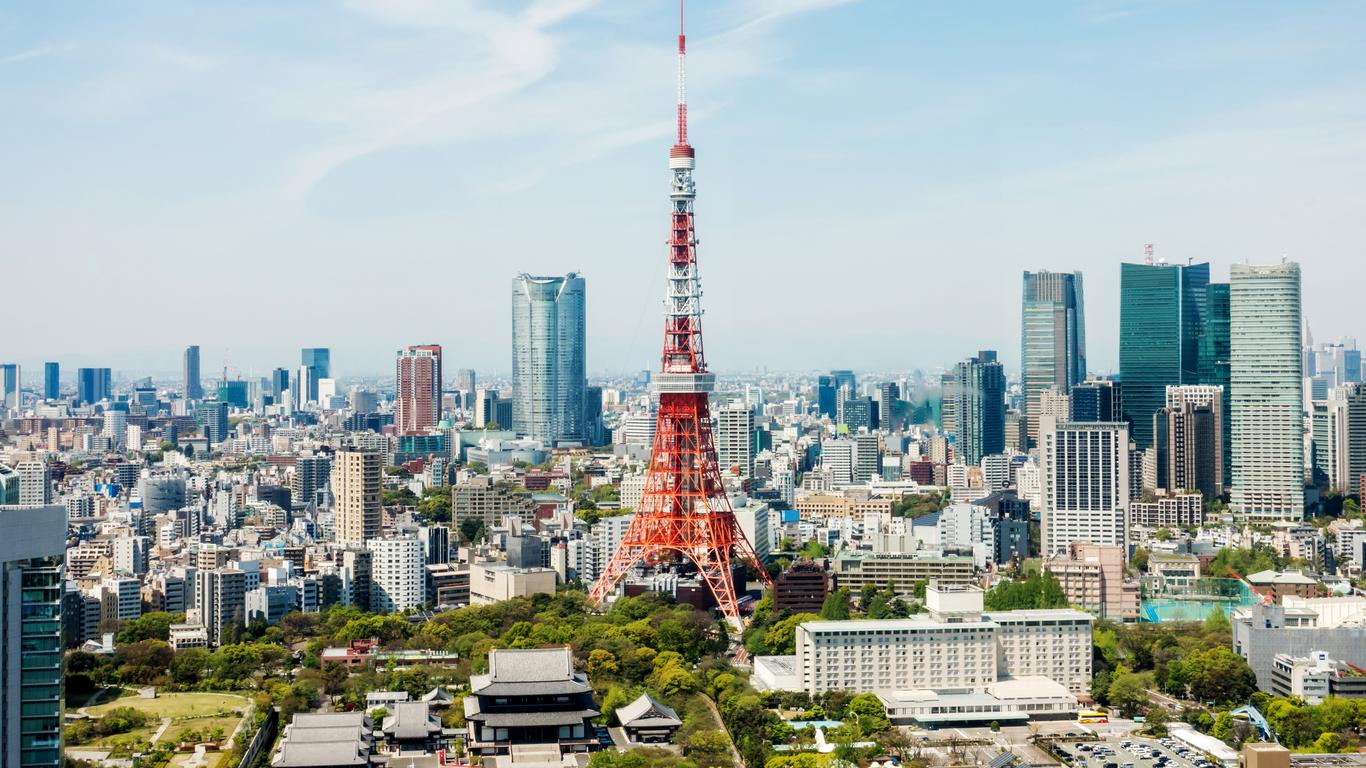Modelled on the Eiffel Tower and rising 332 metres above the city, Tokyo Tower remains an endearing symbol of Japan. It was predominantly constructed as a broadcasting tower but has morphed into a major modern tourist attraction, with observation decks and an aquarium.
The main observatory is located at 150 metres and is accessed via a 600-step staircase, or an elevator. From here a second elevator leads to the 250-metre special observatory, where it's possible to see distant Mount Fuji on a clear day. A supplementary ticket must be purchased for this observation deck.
Filling the four ground floors is FootTown, a mass of tourist attractions and food courts. Most of these have their own entrance tickets: the Aquarium Gallery, Guinness World Records Museum, Tokyo Tower Wax Museum, and an amusement park with rides for small children.
Within short walking distance of the tower are Onarimon Station, Akabanebashi Station, and Kamicacho Station. It's difficult to get lost: Tokyo Tower is the compass point for which so much of the city is orientated from.
Tokyo Tower's construction holds a symbolic place in Japan's history. As the country was rebuilding and reconnecting with the West after WWII, basing the tower's design on the Eiffel Tower had a certain poignancy. It rises 13 meters higher than its Parisian counterpart and became the landmark that reflected Japan's ascent into a modern economic powerhouse. Until 2012 this was Japan's tallest structure.





